Inspiratory muscle training, with or without concomitant pulmonary rehabilitation, for chronic obstructive pulmonary disease (COPD)
- PMID: 36606682
- PMCID: PMC9817429
- DOI: 10.1002/14651858.CD013778.pub2
Inspiratory muscle training, with or without concomitant pulmonary rehabilitation, for chronic obstructive pulmonary disease (COPD)
Abstract
Background: Inspiratory muscle training (IMT) aims to improve respiratory muscle strength and endurance. Clinical trials used various training protocols, devices and respiratory measurements to check the effectiveness of this intervention. The current guidelines reported a possible advantage of IMT, particularly in people with respiratory muscle weakness. However, it remains unclear to what extent IMT is clinically beneficial, especially when associated with pulmonary rehabilitation (PR). OBJECTIVES: To assess the effect of inspiratory muscle training (IMT) on chronic obstructive pulmonary disease (COPD), as a stand-alone intervention and when combined with pulmonary rehabilitation (PR).
Search methods: We searched the Cochrane Airways trials register, CENTRAL, MEDLINE, Embase, PsycINFO, Cumulative Index to Nursing and Allied Health Literature (CINAHL) EBSCO, Physiotherapy Evidence Database (PEDro) ClinicalTrials.gov, and the World Health Organization International Clinical Trials Registry Platform on 20 October 2021. We also checked reference lists of all primary studies and review articles.
Selection criteria: We included randomized controlled trials (RCTs) that compared IMT in combination with PR versus PR alone and IMT versus control/sham. We included different types of IMT irrespective of the mode of delivery. We excluded trials that used resistive devices without controlling the breathing pattern or a training load of less than 30% of maximal inspiratory pressure (PImax), or both.
Data collection and analysis: We used standard methods recommended by Cochrane including assessment of risk of bias with RoB 2. Our primary outcomes were dyspnea, functional exercise capacity and health-related quality of life. MAIN RESULTS: We included 55 RCTs in this review. Both IMT and PR protocols varied significantly across the trials, especially in training duration, loads, devices, number/ frequency of sessions and the PR programs. Only eight trials were at low risk of bias. PR+IMT versus PR We included 22 trials (1446 participants) in this comparison. Based on a minimal clinically important difference (MCID) of -1 unit, we did not find an improvement in dyspnea assessed with the Borg scale at submaximal exercise capacity (mean difference (MD) 0.19, 95% confidence interval (CI) -0.42 to 0.79; 2 RCTs, 202 participants; moderate-certainty evidence). We also found no improvement in dyspnea assessed with themodified Medical Research Council dyspnea scale (mMRC) according to an MCID between -0.5 and -1 unit (MD -0.12, 95% CI -0.39 to 0.14; 2 RCTs, 204 participants; very low-certainty evidence). Pooling evidence for the 6-minute walk distance (6MWD) showed an increase of 5.95 meters (95% CI -5.73 to 17.63; 12 RCTs, 1199 participants; very low-certainty evidence) and failed to reach the MCID of 26 meters. In subgroup analysis, we divided the RCTs according to the training duration and mean baseline PImax. The test for subgroup differences was not significant. Trials at low risk of bias (n = 3) demonstrated a larger effect estimate than the overall. The summary effect of the St George's Respiratory Questionnaire (SGRQ) revealed an overall total score below the MCID of 4 units (MD 0.13, 95% CI -0.93 to 1.20; 7 RCTs, 908 participants; low-certainty evidence). The summary effect of COPD Assessment Test (CAT) did not show an improvement in the HRQoL (MD 0.13, 95% CI -0.80 to 1.06; 2 RCTs, 657 participants; very low-certainty evidence), according to an MCID of -1.6 units. Pooling the RCTs that reported PImax showed an increase of 11.46 cmH2O (95% CI 7.42 to 15.50; 17 RCTs, 1329 participants; moderate-certainty evidence) but failed to reach the MCID of 17.2 cmH2O. In subgroup analysis, we did not find a difference between different training durations and between studies judged with and without respiratory muscle weakness. One abstract reported some adverse effects that were considered "minor and self-limited". IMT versus control/sham Thirty-seven RCTs with 1021 participants contributed to our second comparison. There was a trend towards an improvement when Borg was calculated at submaximal exercise capacity (MD -0.94, 95% CI -1.36 to -0.51; 6 RCTs, 144 participants; very low-certainty evidence). Only one trial was at a low risk of bias. Eight studies (nine arms) used the Baseline Dyspnea Index - Transition Dyspnea Index (BDI-TDI). Based on an MCID of +1 unit, they showed an improvement only with the 'total score' of the TDI (MD 2.98, 95% CI 2.07 to 3.89; 8 RCTs, 238 participants; very low-certainty evidence). We did not find a difference between studies classified as with and without respiratory muscle weakness. Only one trial was at low risk of bias. Four studies reported the mMRC, revealing a possible improvement in dyspnea in the IMT group (MD -0.59, 95% CI -0.76 to -0.43; 4 RCTs, 150 participants; low-certainty evidence). Two trials were at low risk of bias. Compared to control/sham, the MD in the 6MWD following IMT was 35.71 (95% CI 25.68 to 45.74; 16 RCTs, 501 participants; moderate-certainty evidence). Two studies were at low risk of bias. In subgroup analysis, we did not find a difference between different training durations and between studies judged with and without respiratory muscle weakness. Six studies reported theSGRQ total score, showing a larger effect in the IMT group (MD -3.85, 95% CI -8.18 to 0.48; 6 RCTs, 182 participants; very low-certainty evidence). The lower limit of the 95% CI exceeded the MCID of -4 units. Only one study was at low risk of bias. There was an improvement in life quality with CAT (MD -2.97, 95% CI -3.85 to -2.10; 2 RCTs, 86 participants; moderate-certainty evidence). One trial was at low risk of bias. Thirty-two RCTs reported PImax, showing an improvement without reaching the MCID (MD 14.57 cmH2O, 95% CI 9.85 to 19.29; 32 RCTs, 916 participants; low-certainty evidence). In subgroup analysis, we did not find a difference between different training durations and between studies judged with and without respiratory muscle weakness. None of the included RCTs reported adverse events.
Authors' conclusions: IMT may not improve dyspnea, functional exercise capacity and life quality when associated with PR. However, IMT is likely to improve these outcomes when provided alone. For both interventions, a larger effect in participants with respiratory muscle weakness and with longer training durations is still to be confirmed.
Copyright © 2023 The Authors. Cochrane Database of Systematic Reviews published by John Wiley & Sons, Ltd. on behalf of The Cochrane Collaboration.
Conflict of interest statement
OA: none known RG: none known AK: none known WF: none known TL: none known AR: none known SK: none known
Figures
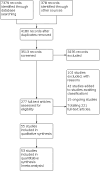
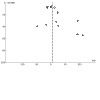
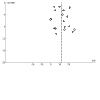
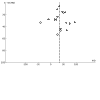
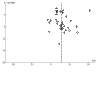
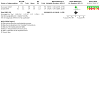
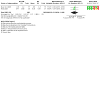
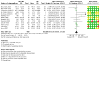
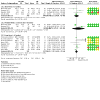
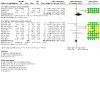
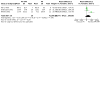

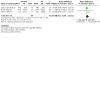

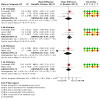
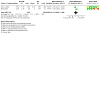
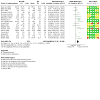
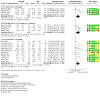

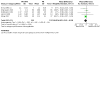
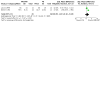
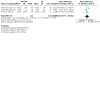

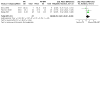
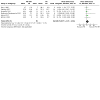

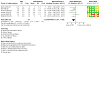

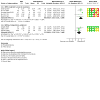


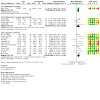
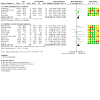
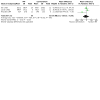
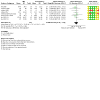
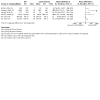
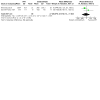
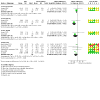
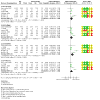
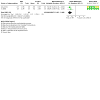

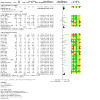
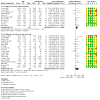
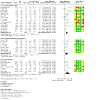
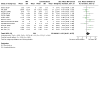
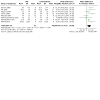
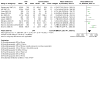
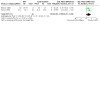
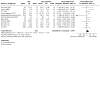
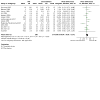
Update of
- doi: 10.1002/14651858.CD013778
References
References to studies included in this review
Abedi Yekta 2019 {published data only}
Bavarsad 2015 {published data only}
-
- Bavarsad MB, Shariati A, Eidani E, Latifi M. The effect of home-based inspiratory muscle training on exercise capacity,exertional dyspnea and pulmonary function in COPD patients. Iranian Journal of Nursing and Midwifery Research 2015;20(5):613-18. [DOI: 10.4103/1735-9066.164588] - DOI - PMC - PubMed
Beaumont 2015 {published and unpublished data}
-
- NCT01545011. Effects of inspiratory muscle training on dyspnea in subjects with chronic obstructive pulmonary disease (IMT) [Effects of inspiratory muscle training combined with a pulmonary rehabilitation program versus a program of pulmonary rehabilitation alone on dyspnea: a randomized trial]. clinicaltrials.gov/show/nct01545011 (first received 6 March 2012).
Beaumont 2018 {published data only}
-
- Beaumont M, Mialon P, Le Ber C, Le Mevel P, Peran L, Meurisse O, et al. Effects of inspiratory muscle training on dyspnoea in severe COPD patients during pulmonary rehabilitation: controlled randomised trial. European Respiratory Journal 2018;51(1):01. [DOI: 10.1183/13993003.01107-2017] - DOI - PubMed
-
- Beaumont M, Mialon P, Le Ber C, Le Mevel P, Peran L, Meurisse O, et al. Effects of inspiratory muscle training on dyspnea in severe COPD patients during pulmonary rehabilitation: controlled randomized trial. European Respiratory Journal 2017;50(suppl 61):OA2924. [DOI: 10.1183/1393003.congress-2017.OA2924] - DOI - PubMed
-
- NCT02074813. Inspiratory muscle training during pulmonary rehabilitation in COPD (EMI II) [Effects of inspiratory muscle training (IMT) on dyspnea in COPD during pulmonary rehabilitation: randomized controlled trial]. clinicaltrials.gov/show/NCT02074813 (first received 28 February 2014).
Beckerman 2005 {published data only}
-
- Beckermann M, Weiner M, Weiner P. The effects of one year specific inspiratory muscle training in patients with COPD. In: European Respiratory Journal. Vol. 26 Suppl 49. 2005:Abstract No. 539.
-
- Weiner P, Beckerman M, Magadle R, Berar-Yanay N. Maintenance of inspiratory muscle training in COPD patients: one year follow up [Abstract]. In: European Respiratory Journal. Vol. 22. 2003:P3438. - PubMed
Belman 1988 {published data only}
Berry 1996 {published data only}
Berton 2015 {published data only}
-
- Axmann de Castro M. Efeito do treinamento muscular inspiratório sobre a dispneia, tolerância ao exercício e metaborreflexo da musculatura ventilatória em pacientes com doença pulmonar obstrutiva crônica [Masters thesis]. Porto Alegre: Federal University of Rio Grande do Sul (UFRGS), 2015. [https://www.lume.ufrgs.br/bitstream/handle/10183/119402/000969567.pdf?se...]
-
- Berton DC, Castro M, Frohlich LF, Castilho M, Dorneles R, Chiappa G, et al. Effects of inspiratory muscle training on leg blood flow and exercise tolerance in COPD. European Respiratory Journal 2015;46 Suppl 59:PA2250.
-
- Castro MA, Fröhlich LF, Chiappa GR, Knorst MM, Neder JA, Berton DC, et al. Improvement in exercise capacity after inspiratory muscle training is related to increased calf blood flow during inspiratory load in COPD. SM Journal of Pulmonary Medicine 2016;2(1):1013.
Bustamante 2007 {published data only}
-
- Bustamante V, Gáldiz Iturri JB, Gorostiza Manterola A, Camino Buey J, Talayero Sebastián N, Peña Víctor S. Comparison of 2 methods for inspiratory muscle training in patients with chronic obstructive pulmonary disease [Comparación de 2 métodos de entrenamiento muscular inspiratorio en pacientes con EPOC]. Archivos de Bronconeumología 2007;43(8):431-8. [DOI: 10.1157/13108782] - DOI - PubMed
Charususin 2018 {published and unpublished data}
-
- Charususin N, Gosselink R, Decramer M, Demeyer H, McConnell A, Saey D, et al. Relation between training quality, improvements in inspiratory muscle function, and changes in exercise capacity following an inspiratory muscle training intervention (IMTCO study). European Respiratory Journal 2017;50 Suppl 61:PA3278.
-
- Charususin N, Gosselink R, Decramer M, McConnell A, Demeyer H, Saey D, et al. A multicentre randomised controlled trial of inspiratory muscle training for patients with chronic obstructive pulmonary disease (IMTCO study). European Respiratory Journal 2017;50 Suppl 61:OA2925. [DOI: 10.1183/1393003.congress-2017.OA2925] - DOI
-
- Charususin N, Gosselink R, Decramer M, McConnell A, Saey D, Maltais F, et al. Inspiratory muscle training protocol for patients with chronic obstructive pulmonary disease (IMTCO study): a multicentre randomised controlled trial. BMJ Open 2013;3(8):e003101. [DOI: 10.1136/bmjopen-2013-003101] - DOI - PMC - PubMed
-
- Charususin NA, Gosselink R, Decramer M, McConnell A, Saey D, Maltais F, et al. Inspiratory muscle training for patients with chronic obstructive pulmonary disease (IMTCO study): a multicentre randomised controlled trial. European Respiratory Journal 2016;48 Suppl 60:OA1519. [DOI: 10.1183/13993003.congress-2016.OA1519] - DOI - PMC - PubMed
Chuang 2017 {published data only}
Covey 2001 {published data only}
-
- Covey MK, Larson JL, Wirtz SE, Berry JK, Pogue NJ, Alex CG, et al. High-intensity inspiratory muscle training in patients with chronic obstructive pulmonary disease and severely reduced function. Journal of Cardiopulmonary Rehabilitation 2001;21(4):231-40. [PMID: ] - PubMed
Cutrim 2019 {published data only}
-
- Cutrim AL, Duarte AA, Silva-Filho AC, Dias CJ, Urtado CB, Ribeiro RM, et al. Inspiratory muscle training improves autonomic modulation and exercise tolerance in chronic obstructive pulmonary disease subjects: a randomized-controlled trial. Respiratory Physiology and Neurobiology 2019;263:31-7. [DOI: 10.1016/j.resp.2019.03.003] - DOI - PubMed
Dacha 2019 {published data only}
-
- Dacha S, Rodrigues A, Louvaris Z, Janssens L, Janssens W, Gosselink R, et al. Effects of inspiratory muscle training (IMT) on dyspnea, respiratory muscle function and respiratory muscle activation in patients with COPD during endurance cycling. European Respiratory Journal 2019;54 Suppl 63:PA2199. [DOI: 10.1183/13993003.congress-2019.PA2199] - DOI
De Farias 2019 {published and unpublished data}
-
- Farias CA, Gualdi LP, da Silva SB, Parreira VF, Montemezzo D, Resqueti VR, et al. Effects of different modalities of inspiratory muscle training as an add-on to conventional treatment of patients with chronic obstructive pulmonary disease (COPD): study protocol for a randomized controlled trial. Trials 2019;20(1):231. [DOI: 10.1186/s13063-019-3271-1] - DOI - PMC - PubMed
-
- Farias C, Fregonezi G, Batista IP, Castro L, Lopes N, Gualdi L, et al. Effects of respiratory muscle training with different modalities in COPD patients: a randomized controlled trial. European Respiratory Journal 2019;54 Suppl 63:PA2198. [DOI: 10.1183/13993003.congress-2019.PA2198] - DOI
-
- RBR-94v6kd. Effects of exercise of the respiratory muscles with different types of devices in people with chronic obstructive pulmonary disease. https://ensaiosclinicos.gov.br/rg/RBR-94v6kd/ (first received 23 November 2016).
Dekhuijzen 1991 {published data only}
-
- Dekhuijzen PN, Beek MM, Folgering HT, Van Herwaarden CL. Psychological changes during pulmonary rehabilitation and target-flow inspiratory muscle training in COPD patients with a ventilatory limitation during exercise. International Journal of Rehabilitation Research 1990;13:109-17. - PubMed
-
- Dekhuijzen PNR, Van Herwaarden CLA, Folgering H. Target-flow inspiratory muscle training (IMT) increases inspiratory muscle strength and endurance. European Respiratory Journal 1989;2:389.
Dellweg 2017 {published data only}
-
- NCT00291460. Inspiratory muscle training in hypercapnic COPD [Randomized controlled trial of inspiratory muscle training in patients with stable hypercapnic respiratory failure due to COPD]. clinicaltrials.gov/show/NCT00291460 (first received 14 February 2006).
Fanfa Bordin 2020 {published data only}
-
- Fanfa Bordin D, Cardoso DM, Wagner LE, Beckenkamp PR, Goncalves da Silva AL, Nunes Paiva D. Sternocleidomastoid muscle activation following inspiratory muscle training in patients with chronic obstructive pulmonary disease: a randomized clinical trial. Fisioterapia e Pesquisa 2020;27(2):133-9. [DOI: 10.1590/1809-2950/19009727022020] - DOI
-
- NCT02014155. Effects of inspiratory muscle training on respiratory electromyographic activity in patients with COPD participants and non-participants of a pulmonary rehabilitation program. clinicaltrials.gov/show/nct02014155 (first received 18 December 2013).
Harver 1989 {published data only}
-
- Harver, AA, Mahler D, Daubenspeck JA. Targeted inspiratory muscle training improves respiratory muscle function and reduces dyspnea in patients with chronic obstructive pulmonary disease. Annals of Internal Medicine 2020;111(2):117-24. - PubMed
Heijdra 1996 {published data only}
-
- Heijdra YF, Dekhuijzen PN, Van Herwaarden CL, Folgering HT. Nocturnal saturation improves by target-flow inspiratory muscle training in patients with COPD. American Journal Respiratory Critical Care Medicine 1996;153(1):260-5. - PubMed
-
- Heijdra YF, Dekhuijzen PN, Van Herwaarden CL, Folgering HT. Target flow inspiratory muscle training (IMT) improves the nocturnal saturation in patients with COPD. European Respiratory Journal 1994;7 Suppl 18:237s. - PubMed
Hill 2006 {published data only}
-
- Hill K, Jenkins SC, Philippe DL, Cecins N, Shepherd KL, Green DJ, et al. High-intensity inspiratory muscle training in COPD. European Respiratory Journal 2006;27(6):1119-28. [PMID: ] - PubMed
Hill 2007 {published data only}
Hsiao 2003 {published data only}
-
- Hsiao SF, Wu YT, Wu HD, Wang TG, Wang TG. Comparison of effectiveness of pressure threshold and targeted resistance devices for inspiratory muscle training in patients with chronic obstructive pulmonary disease. Journal of the Formosan Medical Association / Taiwan yi zhi 2003;102(4):240-5. - PubMed
Kim 1993 {published data only}
-
- Kim MJ, Larson JL, Covey MK, Vitalo CA, Alex CG, Patel M. Inspiratory muscle training in patients with chronic obstructive pulmonary disease. Nursing Research 1993;42(6):356-62. - PubMed
Koppers 2006 {published data only}
Langer 2018 {published data only}
-
- Dacha S, Langer D, Ciavaglia C, Webb K, Preston M, O'Donnell DE. Effect of inspiratory muscle training (IMT) on static and dynamic respiratory muscle function in patients with COPD. European Respiratory Journal 2017;50 Suppl 61:OA2923. [DOI: 10.1183/1393003.congress-2017.OA2923] - DOI
-
- Dacha S, Langer D, Ciavaglia C, Webb K, Preston M, O'Donnell DE. Effect of inspiratory muscle training on respiratory muscle function and diaphragm activation in patients with COPD. American Journal of Respiratory and Critical Care Medicine 2017;195(Meeting Abstracts):A2860. [DOI: 10.1164/ajrccm-conference.2017.A109] - DOI
-
- Langer D, Ciavaglia C, Webb K, Preston M, Neder JA, Gosselink R, et al. Inspiratory muscle training reduces respiratory neural drive (RND) during exercise in patients with COPD. European Respiratory Journal 2014;44 Suppl 58:1912.
Larson 1988 {published data only}
Larson 1999 {published data only}
Leelarungrayub 2017 {published data only}
-
- Leelarungrayub J, Pinkaew D, Puntumetakul R, Klaphajone J. REffects of a simple prototype respiratory muscle trainer on respiratory muscle strength, quality of life and dyspnea, and oxidative stress in COPD patients: a preliminary study. International Journal of Chronic Obstructive Pulmonary Disease 2017;12:1415-25. [DOI: 10.2147/COPD.S131062] - DOI - PMC - PubMed
Lisboa 1997 {published data only}
-
- Lisboa C, Villafranca C, Leiva A, Cruz E, Pertuze J, Borzone G. Inspiratory muscle training in chronic airflow limitation: effect on exercise performance. European Respiratory Journal 1997;10(3):537-42. - PubMed
Mador 2005 {published data only}
-
- Mador MJ, Deniz O, Aggarwal A, Shaffer M, Kufel TJ, Spengler CM. Effect of respiratory muscle endurance training in patients with COPD undergoing pulmonary rehabilitation. In: American Thoracic Society 99th International Conference; 2003 May 16-21; Seattle. 2003:B046 Poster D8. - PubMed
Magadle 2007 {published data only}
Majewska‐Pulsakowska 2016 {published data only}
Masanga 2011 {published data only}
-
- Masanga L, Fernandez L. Additive effects of high-intensity inspiratory muscle training in pulmonary rehabilitation among COPD patients in the Philippines. Respirology 2011;16 Suppl 2:119 [1130]. [DOI: 10.1111/j.1400-1843.2011.02071.x] - DOI
Nikoletou 2016 {published data only}
-
- Nikoletou D, Backley JA, Gearing J, Man WD, Mustafa N, Johnson LC, et al. Inspiratory muscle strength and endurance training in moderate to severe COPD patients [Abstract]. In: American Thoracic Society 100th International Conference; 2004 May 21-26; Orlando. 2004:D96 Poster 115.
-
- Nikoletou D, Backley JA, Gearing J, Man WD, Mustfa N, Johnson LC, et al. A double-blind, randomised controlled trial of inspiratory muscle training in COPD patients [Abstract]. Thorax 2003;58 Suppl 3:iii77.
-
- Nikoletou D, Man WD-C, Mustfa N, Moore J, Rafferty G, Grant RL, et al. Evaluation of the effectiveness of a home-based inspiratory muscle training programme in patients with chronic obstructive pulmonary disease using multiple inspiratory muscle tests. Disability and Rehabilitation 2016;38(3):250-9. [DOI: 10.3109/09638288.2015.1036171] - DOI - PubMed
Paneroni 2018 {published data only}
-
- Paneroni M, Simonelli C, Saleri M, Trainini D, Fokom G, Speltoni I, et al. Short-term effects of normocapnic hyperpnea and exercise training in patients with chronic obstructive pulmonary disease: a pilot study. American Journal of Physical Medicine and Rehabilitation 2018;97(12):866-72. [DOI: 10.1097/PHM.0000000000000988] - DOI - PubMed
Petrovic 2012 {published data only}
-
- NCT00469313. Efficacy of inspiratory muscle training on inspiratory capacity in patients with COPD. clinicaltrials.gov/show/NCT00469313 (first received 4 May 2007).
Preusser 1994 {published data only}
-
- Preusser BA, Winningham ML, Clanton TL. The effects of high versus low-intensity inspiratory muscle interval training in patients with COPD. Chest 1994;106(1):110-17. - PubMed
Ramirez Sarmiento 2002 {published data only}
-
- Ramirez-Sarmiento A, Orozco-Levi M, Guell R, Barreiro E, Hernandez N, Mota S, et al. Inspiratory muscle training in patients with chronic obstructive pulmonary disease: structural adaptation and physiologic outcomes. American Journal of Respiratory and Critical Care Medicine 2002;166(11):1491-7. [DOI: 10.1164/rccm.200202-075OC] - DOI - PubMed
Saher 2021 {published data only}
-
- Saher T, Moiz JA, Bhati P, Ali MS, Talwar D. Effect of inspiratory muscle training in hypercapnic chronic obstructive pulmonary disease patients during acute care: a randomised clinical trial. Comparative Exercise Physiology 2021;17(1):55-63.
Saka 2021 {published data only}
-
- NCT03517839. Assessment of impact of inspiratory muscle training on movement fear due to dyspnea in chronic obstructive pulmonary disease. clinicaltrials.gov/show/nct03517839 (first received 7 May 2018).
-
- Saka S, Gurses HN, Bayram M. Effect of inspiratory muscle training on dyspnea-related kinesiophobia in chronic obstructive pulmonary disease: a randomized controlled trial. Complementary Therapies in Clinical Practice 2021;44:101418. - PubMed
Sanchez Riera 2001 {published data only}
-
- Sanchez Riera H, Montemayor Rubio T, Ortega Ruiz F, Cejudo Ramos P, Del Castillo Otero D, Elias Hernandez T, et al. Inspiratory muscle training in patients with COPD: effect on dyspnea, exercise performance, and quality of life. Chest 2001;120(3):748-56. [DOI: 10.1378/chest.120.3.748] - DOI - PubMed
Scherer 2000 {published data only}
-
- Scherer TA, Spengler CM, Owassapian D, Imhof E, Boutellier U. Respiratory muscle endurance training in chronic obstructive pulmonary disease: impact on exercise capacity, dyspnea, and quality of life. American Journal of Respiratory and Critical Care Medicine 2000;162(5):1709-14. [DOI: 10.1164/ajrccm.162.5.9912026] - DOI - PubMed
Schultz 2018 {published data only}
-
- Schultz K, Jelusic D, Wittmann M, Kramer B, Huber V, Fuchs S, et al. Inspiratory muscle training does not improve clinical outcomes in 3-week COPD rehabilitation: results from a randomised controlled trial. European Respiratory Journal 2018;51(1):1702000. [DOI: 10.1183/13993003.02000-2017] - DOI - PubMed
-
- Schultz K, Kramer B, Fuchs S, Wingart S, Lehbert N, Huber V, et al. Effects of routine inspiratory muscle training (IMT) as add-on to pulmonary rehabilitation (PR) in COPD. European Respiratory Journal 2015;46 Suppl 59:PA544. [DOI: 10.1183/13993003.congress-2015.PA544] - DOI
Sykes 2005 {published data only}
-
- Sykes K, Hang HW. Inspiratory muscle training in the treatment of chronic obstructive pulmonary disease: randomized controlled trial. American Journal of Recreation Therapy 2005;4(2):39-48.
Tounsi 2021 {published data only}
-
- Tounsi B, Acheche A, Lelard T, Tabka Z, Trabelsi Y, Ahmaidi S. Effects of specific inspiratory muscle training combined with whole-body endurance training program on balance in COPD patients: randomized controlled trial. PLOS ONE 23 September 2023;16(9):e0257595. [DOI: 10.1371/journal.pone.0257595] - DOI - PMC - PubMed
Tout 2013 {published data only}
Wang 2017 {published data only}
-
- Wang K, Zeng G-Q, Li R, Luo Y-W, Wang M, Hu Y-H, et al. Cycle ergometer and inspiratory muscle training offer modest benefit compared with cycle ergometer alone: a comprehensive assessment in stable COPD patients. International Journal of Chronic Obstructive Pulmonary Disease 2017;12:2655-68. [DOI: 10.2147/COPD.S140093] - DOI - PMC - PubMed
-
- Yuwen L, Peng L, Yun L, Yitai C, Yuxia H, Kai W, et al. Effects of combined cycle ergometer and inspiratory muscle training in patients with stable chronic obstructive pulmonary disease. Respirology 2016;21 Suppl 3:176 (APSR6-0158). [DOI: 10.1111/resp.12939-15] - DOI
Weiner 1992 {published data only}
-
- Weiner P, Azgad Y, Weiner M, Ganem R. Inspiratory muscle training combined with general exercise reconditioning in chronic obstructive pulmonary disease. Harefuah 1993;124(7):396-400, 456. - PubMed
Weiner 2000 {published data only}
Weiner 2003 {published data only}
Weiner 2006 {published data only}
Wu 2017 {published data only}
-
- NCT03101774. Inspiratory muscle training on respiratory muscle function, quality of life and exercise capacity in stable COPD [Effects of respiratory physiology-oriented inspiratory muscle training on respiratory muscle function, quality of life and exercise capacity in stable COPD with inspiratory muscle weakness: a randomised controlled trial]. clinicaltrials.gov/show/nct03101774 (first received 5 April 2017).
Xu 2018 {published data only}
ZhouL 2016 {published data only}
-
- Zhou L-Q, Li X-Y, Li Y, Guo B-P, Guan L-L, Chen X, et al. Inspiratory muscle training followed by non-invasive positive pressure ventilation in patients with severe chronic obstructive pulmonary disease: a randomized controlled trial. Nan fang yi ke da xue xue bao [Journal of Southern Medical University] 2016;36(8):1069-74. - PubMed
References to studies excluded from this review
Ahmad 2013 {published data only}
-
- Ahmad H, Justine M, Othman Z, Mohan V, Mirza FT. The outcomes of short term inspiratory muscle training (IMT) combined with chest physiotherapy in hospitalized COPD patients. Bangladesh Journal of Medical Science 2013;12(4):398-404. [DOI: 10.3329/bjms.v12i4.13302] - DOI
Aldrich 1985 {published data only}
Anand 2013 {published data only}
-
- Anand A, Narwal R, Sindhwani G. Accessory inspiratory muscles energy technique effect on pulmonary function in COPD subjects. Indian Journal of Physiotherapy and Occupational Therapy 2013;7(3):192-7. [DOI: 10.5958/j.0973-5674.7.3.091] - DOI
Baines 2005 {published data only}
-
- Baines SJ, Enright SJ. Does a threshold loading device maintain functional improvements following a programme of high intensity inspiratory muscle training in patients with chronic obstructive pulmonary disease? [Abstract]. European Respiratory Journal 2005;26 Suppl 49:4583.
Basso Vanelli 2016 {published data only}
-
- Basso-Vanelli R, Pantoni C, Borghi-Silva A, Labadessa I, Regueiro E, Di Lorenzo V, et al. Inspiratory muscle training improves thoracoabdominal asynchronism during unsupported upper limb exercise in COPD patients-pilot study. European Respiratory Journal 2016;48 Suppl 60:PA1373. [DOI: 10.1183/13993003.congress-2016.PA1373] - DOI
-
- Basso-Vanelli RP, Pires Di Lorenzo VA, Labadessa IG, Regueiro Eloisa MG, Jamami Mauricio. Effects of inspiratory muscle training and calisthenics-and-breathing exercises in COPD with and without respiratory muscle weakness. Respiratory Care 2016;61(1):50-60. [DOI: 10.4187/respcare.03947] - DOI - PubMed
-
- NCT01510041. Effects of respiratory muscle training and respiratory exercise in exercise tolerance, performing daily life activities and quality of life of patients with chronic obstructive pulmonary disease. clinicaltrials.gov/show/NCT01510041 (first received 13 January 2012).
Battaglia 2009 {published data only}
-
- Battaglia E, Fulgenzi A, Ferrero ME. Rationale of the combined use of inspiratory and expiratory devices in improving maximal inspiratory pressure and maximal expiratory pressure of patients with chronic obstructive pulmonary disease. Archives of Physical Medicine and Rehabilitation 2009;90(6):913-18. [DOI: 10.1016/j.apmr.2008.12.019] - DOI - PubMed
Belman 1994 {published data only}
-
- Belman MJ, Botnick WC, Nathan SD, Chon KH. Ventilatory load characteristics during ventilatory muscle training. Journal of Cardiopulmonary Rehabilitation and Prevention 1994;14(6):409. - PubMed
Bgin 1991 {published data only}
Bissett 2016 {published data only}
-
- Bissett B, Leditschke IA, Neeman T, Boots R, Paratz J. Inspiratory muscle training to enhance recovery from prolonged mechanical ventilation: a randomized trial. American Journal of Respiratory and Critical Care Medicine 2016;193(Meeting Abstracts):A2613.
Bjerre Jepsen 1981 {published data only}
-
- Bjerre-Jepsen K, Secher NH, Kok-Jensen A. Inspiratory resistance training in severe chronic obstructive pulmonary disease. European Journal of Respiratory Diseases 1981;62(6):405-11. - PubMed
Cader 2010 {published data only}
-
- Cader SA, Vale RG, Castro JC, Bacelar SC, Biehl C, Gomes MC, et al. Inspiratory muscle training improves maximal inspiratory pressure and may assist weaning in older intubated patients: a randomised trial. Journal of Physiotherapy 2010;56(3):171-7. [DOI: 10.1016/s1836-9553(10)70022-9] - DOI - PubMed
Chen 1985 {published data only}
Daynes 2018 {published data only}
de Andrade 2005 {published data only}
-
- Andrade AD, Silva TN, Vasconcelos H, Marcelino M, Rodrigues-Machado MG, Filho VC, et al. Inspiratory muscular activation during threshold therapy in elderly healthy and patients with COPD. Journal of Electromyography and Kinesiology 2005;15(6):631-9. [DOI: 10.1016/j.jelekin.2005.06.002] - DOI - PubMed
de Lucas Ramos 1998 {published data only}
-
- Lucas Ramos P, Rodriguez Gonzalez-Moro JM, Garcia de Pedro J, Santacruz Siminiani A, Tatay Marti E, Cubillo Marcos JM. Training of inspiratory muscles in chronic obstructive lung disease. Its impact on functional changes and exercise tolerance. Archivos de Bronconeumologia 1998;34(2):64-70. - PubMed
Di Mambro 2007 {published data only}
-
- Di Mambro TR, Figueiredo PH, Wanderley TR, Kristki AL, Guimaraes FS. Inspiratory muscle training in chronic obstructive pulmonary disease: impact on quality of life, exercise intolerance, and dyspnea. Fisioterapia e Pesquisa 2007;14(2):65-71.
DRKS00005637 {published data only}
-
- DRKS00005637. Respiratory muscle activation by respiratory muscle training in patients with advanced COPD [Respiratory muscle activation by respiratory muscle training in patients with advanced COPD - EMG-Train COPD]. ictrptest.azurewebsites.net/Trial2.aspx?TrialID=DRKS00005637 (first received 4 February 2014).
DRKS00006021 {published data only}
-
- DRKS00006021. Influence of a controlled inspiratory muscle training on the course of COPD after acute exacerbation (AECOPD): a controlled study. www.drks.de/DRKS00006021 (first received 9 May 2014).
Elbouhy 2014 {published data only}
-
- Elbouhy MS, AbdelHalim HA, Hashem AM. Effect of respiratory muscles training in weaning of mechanically ventilated COPD patients. Egyptian Journal of Chest Diseases and Tuberculosis 2014;63(3):679-87. [DOI: ]
Elmorsi 2016 {published data only}
-
- Elmorsi AS, Eldesoky ME, Mona AA, Shalaby NM, Abdalla Dina A, et al. Effect of inspiratory muscle training on exercise performance and quality of life in patients with chronic obstructive pulmonary disease. Egyptian Journal of Chest Diseases and Tuberculosis 2016;65(1):41-6. [DOI: 10.1016/j.ejcdt.2015.10.006] - DOI
Enright 2005 {published data only}
-
- Enright SJ, Baines SJ. Evaluation of a new computerised method of high intensity inspiratory muscle training in patients with chronic airways obstruction [Abstract]. European Respiratory Journal 2005;26 Suppl 49:Abstract No. 4584.
Garcia 2008 {published data only}
-
- Garcia S, Rocha M, Pinto P, Lopes AM, Bárbara C. Treino de músculos inspiratórios em doentes com DPOC. Revista Portuguesa de Pneumologia 2008;14(2):177-94. - PubMed
-
- Garcia S, Rocha M, Pinto P, Lopes AM, Barbara C. Inspiratory muscle training in COPD patients. Revista Portuguesa de Pneumologia 2008;14(2):177-94. - PubMed
Goldstein 1989 {published data only}
-
- Goldstein R, De Rosie J, Long S, Dolmage T, Avendano MA. Applicability of a threshold loading device for inspiratory muscle testing and training in patients with COPD. Chest 1989;96(3):564-71. - PubMed
Gregg 1989 {published data only}
-
- Gregg BL. Inspiratory muscle training with a weighted incentive spirometer in subjects with chronic airways obstruction. Respiratory Care 1989;34(10):860-7.
Guyatt 1992 {published data only}
Hart 2000 {published data only}
-
- Hart N, Cramer D, Sylvester K, Nickol AH, Ward SP, Moxham J, et al. Effect of using powerbreathe™ on inspiratory muscle strength. Thorax 2000;55 Suppl 3:A51.
Heydari 2015 {published data only}
Hopp 1996 {published data only}
Ibakordor 2013 {published data only}
-
- Ibakordor S, Dhillon DK, Saravanan S. A safe inspiratory threshold load in chronic obstructive pulmonary disease patients. Indian Journal of Physiotherapy and Occupational Therapy 2013;7(2):48-52. [DOI: 10.5958/j.0973-5674.7.2.011] - DOI
Ionescu 2005 {published data only}
-
- Ionescu AA, Mickleborough TD, Bolton CE, Lindley MR, Chatham K, Nixon LS, et al. Limb and inspiratory muscle dynamic strength in patients with moderate chronic obstructive pulmonary disease [Abstract]. Thorax 2005;2 Suppl II:ii50.
Izumizaki 2008 {published data only}
Johnson 1996 {published data only}
Kivastik 2015 {published data only}
-
- Kivastik J, Arend M, Maestu J. Comparison of different inspiratory muscle warm-up protocols. European Respiratory journal 2015;46 Suppl 59:PA950.
Koch 2020 {published data only}
-
- Koch R, Augusto TR, Ramos AG, Muller PT. Inspiratory muscle training potentiates the beneficial effects of proportional assisted ventilation on exertional dyspnea and exercise tolerance in COPD: a proof-of-concept randomized and controlled trial. COPD 2020;17(4):1-8. [DOI: 10.1080/15412555.2020.1789085] - DOI - PubMed
Kolesnikova 2016 {published data only}
-
- Kolesnikova E, Arutyunov G, Kostyukevich O, Rylova A. Respiratory muscles trainings are effective in lowering the pneumonia frequency in patients with heart failure and chronic obstructive pulmonary disease. European Respiratory Journal 2016;48 Suppl 60:PA3773. [DOI: 10.1183/13993003.congress-2016.PA3773] - DOI
Levine 1986 {published data only}
Liao 2015 {published data only}
-
- Liao LY, Chen KM, Chung WS, Chien JY. Efficacy of a respiratory rehabilitation exercise training package in hospitalized elderly patients with acute exacerbation of COPD: a randomized control trial. International Journal of Chronic Obstructive Pulmonary Disease 2015;10(1):1703-9. [DOI: 10.2147/COPD.S90673] - DOI - PMC - PubMed
Lin 2012 {published data only}
Lisboa 1994 {published data only}
-
- Lisboa C, Munoz V, Beroiza T, Leiva A, Cruz E. Inspiratory muscle training in chronic airflow limitation: comparison of two different training loads with a threshold device. European Respiratory Journal 1994;7(7):1266-74. - PubMed
Lisboa 1995a {published data only}
-
- Lisboa C, Villafranca C, Pertuze J, Leiva A, Repetto P. Clinical effects of inspiratory muscle training in patients with chronic airflow limitation. Revista Medica de Chile 1995;123(9):1108-15. - PubMed
Lisboa 1995b {published data only}
-
- Lisboa C, Villafranca C, Leiva A, Repetto L, Cruz E, Pertuze R. Inspiratory muscle training in patients with chronic bronchial obstruction: factors related to the improvement of dyspnoea. Enfermedades respir. Cir. Torac 1995;11(1):7-15.
Lisboa 1998 {published data only}
-
- Lisboa C, Borzone G, Cruz E. Inspiratory muscle training in patients with chronic obstructive pulmonary disease. Revista Medica de Chile 1998;126(5):563-8. - PubMed
Madariaga 2007 {published data only}
Madsen 1985 {published data only}
-
- Madsen F, Secher NH, Kay L, Rube N. Inspiratory resistance versus general physical training in patients with chronic obstructive pulmonary disease. European Journal of Respiratory Diseases 1985;67(3):167-76. - PubMed
Martin 2006 {published data only}
McKeon 1986 {published data only}
-
- McKeon JL, Turner J, Kelly C, Dent A, Zimmerman PV. The effect of inspiratory resistive training on exercise capacity in optimally treated patients with severe chronic airflow limitation. Australian and New Zealand Journal of Medicine 1986;16(5):648-52. [DOI: 10.1111/j.1445-5994.1986.tb00005.x] - DOI - PubMed
Meshcheriakova 2006 {published data only}
-
- Meshcheriakova NN, Belevskiy AS, Cherniak AV, Nekludova GV, Appaeva AA. Threshold PEP and IMT devices (PID) for COPD patient respiratory training [Abstract]. European Respiratory Journal 2006;28 Suppl 50:553s [P3187].
Minoguchi 2002 {published data only}
NCT01218295 {published data only}
-
- NCT01218295. Inspiratory muscle training with normocapnic hyperpnea in chronic obstructive pulmonary disease (COPD) [Efficacy of inspiratory muscle training by means of Spirotiger® in COPD patients]. clinicaltrials.gov/show/nct01218295 (first received 11 October 2010).
NCT01556139 {published data only}
-
- NCT01556139. Effectiveness of respiratory muscle training by Spirotiger in chronic patients [Evaluation of the effectiveness of respiratory muscle training by the technique of hypocapnia hyperpnea (Spirotiger) in COPD and CHF patients]. clinicaltrials.gov/show/NCT01556139 (first received 16 March 2012).
NCT01747694 {published data only}
-
- NCT01747694. Respiratory muscle exercise training in COPD patients. clinicaltrials.gov/show/nct01747694 (first received 12 December 2012).
NCT01945398 {published data only}
-
- NCT01945398. IMT in ventilatory muscle metaboreflex in COPD [Effect of inspiratory muscle training in the ventilatory muscle metaboreflex in chronic obstructive pulmonary disease patients]. clinicaltrials.gov/show/nct01945398 (first received 18 September 2013).
NCT01956565 {published data only}
-
- NCT01956565. Feasibility of inspiratory muscle training in people with chronic obstructive pulmonary disease (COPD) who decline pulmonary rehabilitation. clinicaltrials.gov/show/NCT01956565 (first received 8 October 2013).
NCT02186340 {published data only}
-
- NCT02186340. Effects of inspiratory muscle training on breathing pattern in patients with chronic obstructive pulmonary disease. clinicaltrials.gov/show/NCT02186340 (first received 10 July 2014).
NCT02278523 {published data only}
-
- NCT02278523. The respiratory physiology variation of COPD patients in inspiratory muscle training. clinicaltrials.gov/show/nct02278523 (first received 30 October 2014).
NCT02579200 {published data only}
-
- NCT02579200. Inspiratory muscle training for dyspneic patients with COPD-HF overlap: a multicenter, randomized controlled trial. clinicaltrials.gov/show/nct02579200 (first received 19 October 2015).
NCT02914093 {published data only}
-
- NCT02914093. IMT in hypercapnic patients with COPD (THYPISK-f) [Feasibility of inspiratory muscle training in patients with chronic hypercapnia and severe chronic obstructive pulmonary disease]. ClinicalTrials.gov/show/NCT02914093 (first received 26 September 2016).
NCT02935166 {published data only}
-
- NCT02935166. Innovations in respiratory muscles training in patients with chronic obstructive pulmonary disease (INNOTORIO) [INNOTORIO: Innovations in the training of the inspiratory muscles on patients with chronic obstructive pulmonary disease: design of a digital dual valve and evaluation of a new high-intensity training scheme of short duration]. clinicaltrials.gov/show/nct02935166 (first received 17 October 2016).
NCT03186092 {published data only}
-
- NCT03186092. Effects of respiratory muscle training on respiratory muscle strength, functional capacity and quality of life in pulmonary hypertension. clinicaltrials.gov/show/nct03186092 (first received 14 June 2017).
NCT03500042 {published data only}
-
- NCT03500042. Effects of different modes of respiratory muscle training on respiratory mechanics and NRD in patient with stable COPD [Effects of different modes of respiratory muscular threshold loads training on respiratory mechanics and neural respiratory drive (NRD) in patient with stable chronic obstructive pulmonary disease (COPD)]. clinicaltrials.gov/show/NCT03500042 (first received 17 April 2018).
NCT03739879 {published data only}
-
- NCT03739879. Effectivity of inspiratory muscle trainer in the chronic obstructive pulmonary disease rehabilitation program. clinicaltrials.gov/show/nct03739879 (first received 14 November 2018).
NCT03844711 {published data only}
-
- NCT03844711. Transcutaneous electrical diaphragmatic stimulation and inspiratory muscle training in patients with COPD exacerbated. clinicaltrials.gov/show/nct03844711 (first received 18 February 2019).
NCT03880630 {published data only}
-
- Inspiratory muscle activation pattern analysis in assisting precision in inspiratory muscle training in patients with chronic respiratory disease. clinicaltrials.gov/ct2/show/NCT03880630 (first received 19 March 2019).
NCT04084405 {published data only}
-
- NCT04084405. Effect of inspiratory muscle training on balance in chronic obstructive pulmonary disease patients. clinicaltrials.gov/show/nct04084405 (first received 10 September 2019).
NCT04117399 {published data only}
-
- NCT04117399. Effect of inspiratory muscle training on posture in chronic obstructive pulmonary disease patients. clinicaltrials.gov/show/nct04117399 (first received 7 October 2019).
NCT04460261 {published data only}
-
- NCT04460261. The effects of 'functional' inspiratory muscle training [The effects of a new integrated exercise program called 'functional' inspiratory muscle training in geriatric individuals with and without chronic obstructive pulmonary disease]. ClinicalTrials.gov/show/NCT04460261 (first received 7 July 2020).
Neves 2014a {published data only}
Neves 2014b {published data only}
-
- Neves L, Chiappa A, Da Silva V, Vieira P, Cipriano G Jr, Arena R, et al. Comparative effects of inspiratory muscle training and resistance training on respiratory and skeletal muscle strength in COPD: responses of the a pulmonary rehabilitation program. European Respiratory Journal 2014;44:P598.
Nield 2007 {published data only}
Noseda 1987 {published data only}
-
- Noseda A, Carpiaux JP, Vandeput W, Prigogine T, Schmerber J. Resistive inspiratory muscle training and exercise performance in COPD patients. A comparative study with conventional breathing retraining. Bulletin Europeen de Physiopathologie Respiratoire 1987;23(5):457-63. - PubMed
O'Connor 2019 {published data only}
-
- O'Connor C, Lawson R, Waterhouse J, Mills GH. Is inspiratory muscle training (IMT) an acceptable treatment option for people with chronic obstructive pulmonary disease (COPD) who have declined pulmonary rehabilitation (PR) and can IMT enhance PR uptake? A single-group prepost feasibility study in a home-based setting. BMJ Open 2019;9(8):e028507. [DOI: 10.1136/bmjopen-2018-028507] - DOI - PMC - PubMed
Okura 2019 {published data only}
-
- Okura K, Kawagoshi A, Iwakura M, Shibata K, Furukawa Y, Sugawara K, et al. The effectiveness of inspiratory muscle training in patients with COPD. Journal of the Japan Society for Respiratory Care and Rehabilitation 2019;28(2):274-8. [DOI: 10.15032/jsrcr.28.2_274] - DOI
Okura 2020 {published data only}
-
- Okura K, Takahashi H, Shiotani T, Iida Y, Inagaki T, Ogawa T, et al. Inspiratory muscle training for patients with chronic obstructive pulmonary disease Effect on physical activity ─ Multicenter, randomized controlled trial ─ [─多施設による無作為化比較対照試験─]. 理学療法学 2020;47(6):551-9.
PACTR201703002095224 {published data only}
-
- PACTR201703002095224. Respiratory muscle training in chronic obstructive pulmonary disease [Comparative study between two different respiratory training protocols in patients with chronic obstructive pulmonary disease]. www.who.int/trialsearch/Trial2.aspx?TrialID=PACTR201703002095224 (first received 12 March 2017).
Padula 2001 {published data only}
-
- Padula CA, Yeaw E. Inspiratory muscle training: an exploration of a home-based intervention. Journal of Applied Research 2001;1(2):85-94.
Perez 2010 {published data only}
-
- Perez ME, Guirao L, Martinez A, Ortega P, Pleguezuelos E, Samitier B. Effect of a specific respiratory exercise program on respiratory muscle strength. In: 71st Annual Assembly of the American Academy of Physical Medicine and Rehabilitation; 2010 Nov 4-7; Seattle. Vol. 2. 2010:S25.
Pescaru 2016 {published data only}
-
- Pescaru C, Oancea C, Tudorache E. New device used in COPD rehabilitation. TrainAir system. European Respiratory Journal 2016;48:PA695. [DOI: 10.1183/13993003.congress-2016.PA695] - DOI
Quintero 1999 {published data only}
-
- Quintero JI, Borzone G, Leiva A, Villafranca C, Lisboa C. Effects of inspiratory muscle training on the oxygen cost of breathing in patients with chronic obstructive pulmonary disease. Revista Medica De Chile 1999;127(4):421-8. - PubMed
Richardson 1989 {published data only}
-
- Richardson J, Dunn L, Pardy R. Inspiratory resistive endurance training in patients with chronic obstructive pulmonary disease: a pilot study. Physiotherapie Canada 1989;41(2):85-92.
Rocha 2015 {published data only}
-
- Rocha T, Souza H, Brandao DC, Rattes C, Ribeiro L, Campos SL, et al. The manual diaphragm release technique improves diaphragmatic mobility, inspiratory capacity and exercise capacity in people with chronic obstructive pulmonary disease: a randomised trial. Journal of Physiotherapy 2015;61(4):182-9. [DOI: 10.1016/j.jphys.2015.08.009] - DOI - PubMed
Sassoon 1992 {published data only}
-
- Sassoon CS, Lodia R, Rheeman CH, Kuei JH, Light RW, Mahutte CK. Inspiratory muscle work of breathing during flow-by, demand-flow, and continuous-flow systems in patients with chronic obstructive pulmonary disease. American Review of Respiratory Disease 1992;145(5):1219-22. [DOI: 10.1164/ajrccm/145.5.1219] - DOI - PubMed
Serón 2005 {published data only}
-
- Serón P, Riedemann P, Muñoz S, Doussoulin A, Villarroel P, Cea X. Effect of inspiratory muscle training on muscle strength and quality of life in patients with chronic airflow limitation: a randomized controlled trial [Efecto del entrenamiento muscular inspiratorio sobre la fuerza muscular y la calidad de vida en pacientes con limitación crónica del flujo aéreo. Ensayo clínico aleatorizado]. Archivos de Bronconeumología 2005;41(11):601-6. [DOI: 10.1157/13081248] - DOI - PubMed
Shahin 2008 {published data only}
Shioya 2007 {published data only}
-
- Shioya T, Satake M, Takahashi H, Sugawara K, Kasai C, Kiyokawa N, et al. Combination of chest wall mobilization and respiratory muscle training in comprehensive outpatient pulmonary rehabilitation improves pulmonary function in patients with COPD [Abstract]. In: Respirology. Vol. 14 Suppl 3. 2009:A191 [PD 05-05].
-
- Shioya T, Satake M, Takahashi H, Sugawara K, Ksai C, Kiyokawa N, et al. Combination of chest wall mobilization and respiratory muscle training in comprehensive outpatient pulmonary rehabilitation improves pulmonary function in patients with COPD [Abstract]. In: European Respiratory Journal. Vol. 30 Suppl 51. 2007:188s [P1160].
Similowski 1994 {published data only}
-
- Similowski T, Derenne JP. Inspiratory muscle testing in stable COPD patients. European Respiratory Journal 1994;7(10):1871-6. - PubMed
Sivashanmugam 2019 {published data only}
-
- Sivashanmugam M, Vinod Kumar V, Sridhar R, Kumar R, Stanley G. Comparison of short term inspiratory muscle training and peripheral muscle training on lung function and quality of life in chronic obstructive pulmonary disease patients - a prospective observational study. Lung India 2019;9 Suppl:S107-8. [DOI: 10.4103/0970-2113.271103] - DOI
Soicher 1998 {published data only}
-
- Soicher J, Dechman G. Inspiratory muscle function in chronic obstructive pulmonary disease (COPD). Physical Therapy Reviews 1998;3(1):31-9. [DOI: 10.1179/ptr.1998.3.1.31] - DOI
Sonne 1982 {published data only}
Sudo 1997 {published data only}
-
- Sudo E, Ohga E, Matsuse T, Teramoto S, Nagase T, Katayama H, et al. The effects of pulmonary rehabilitation combined with inspiratory muscle training on pulmonary function and inspiratory muscle strength in elderly patients with chronic obstructive pulmonary disease. Nihon Ronen Igakkai zasshi [Japanese Journal of Geriatrics] 1997;34(11):929-34. [DOI: 10.3143/geriatrics.34.929] - DOI - PubMed
Sugiyama 2010 {published data only}
-
- Sugiyama N, Yokoyama T, Abe T, Kono Y, Sugiyama S, Setoguchi Y. Combined effects of short-term lower and upper extremity training plus inspiratory muscle training in patients with chronic obstructive pulmonary disease. Journal of Tokyo Medical University 2010;68(3):322-9.
Sun 2003 {published data only}
-
- Sun JX, Yin MX, Shao H, Li ZS, Li SW. Effect of respiratory muscle gymnastics on lung function and quality of life in the old patients with chronic obstructive pulmonary disease. Zhonghua Linchuang Kangfu Zazhi 2003;7(27):3698-9.
TCTR20191009004 {published data only}
-
- TCTR20191009004. Physiological change in lung function and respiratory muscle strength in chronic obstructive pulmonary disease patients; cause by pursed-lip breathing exercise using windmill toy model. ictrptest.azurewebsites.net/Trial2.aspx?TrialID=TCTR20191009004 (first received 9 October 2019).
UMIN000030937 {published data only}
-
- UMIN000030937. Efficacy and applicability of respiratory muscle training on the balance of inspiratory-to-expiratory muscle strength and breathing timing in patients with chronic obstructive pulmonary disease: a preparatory research study. ictrptest.azurewebsites.net/Trial2.aspx?TrialID=JPRN-UMIN000030937 1 February 2018.
Van't Hul 2006 {published data only}
Villafranca 1998 {published data only}
Wada 2016 {published data only}
-
- Wada JT, Borges-Santos E, Porras DC, Paisani DM, Cukier A, Lunardi AC, et al. Effects of aerobic training combined with respiratory muscle stretching on the functional exercise capacity and thoracoabdominal kinematics in patients with COPD: a randomized and controlled trial. International Journal of Chronic Obstructive Pulmonary Disease 2016;11:2691-700. [DOI: 10.2147/COPD.S114548] - DOI - PMC - PubMed
Wu 2006 {published data only}
-
- Wu X, Hou L, Bai W. Effects of breathing training on quality of life and activities of daily living in elderly patients with stable severe chronic obstructive pulmonary disease. Chinese Journal of Rehabilitation Medicine 2006;21(3-4):307-10.
Xi 2015 {published data only}
Yamaguti 2012 {published data only}
-
- Yamaguti WP, Claudino RC, Neto AP, Chammas MC, Gomes AC, Salge JM, et al. Diaphragmatic breathing training program improves abdominal motion during natural breathing in patients with chronic obstructive pulmonary disease: a randomized controlled trial. Archives of Physical Medicine and Rehabilitation 2012;93(4):571-7. [DOI: 10.1016/j.apmr.2011.11.026] - DOI - PubMed
Yan 1996 {published data only}
-
- Yan Q, Sun Y. Quantitative research for improving respiratory muscle contraction by breathing exercise. Chinese Medical Journal 1996;109(10):771-5. - PubMed
Yang 2005 {published data only}
-
- Yang S-Y, Feng E-Z, Shen J-L, Zhang Y, Zhao L-H, Wu X-M, et al. Effect of suitable electrostimulation on phrenic nerve in ameliorating diaphragmatic fatigue and pulmonary function in patients with stable chronic cor pulmonale at high altitude area. Chinese Journal of Clinical Rehabilitation 2005;9(23):28-30.
Zhang 2008 {published data only}
-
- Zhang Z-Q, Chen R-C, Yang Q-K, Li P, Wang C-Z, Zhang Z-H, et al. Effects of respiratory training in relation to respiratory pathophysiology on respiratory muscle function and exercise tolerance in chronic obstructive pulmonary disease patients. [Chinese]. Journal of Clinical Rehabilitative Tissue Engineering Research 2008;12(20):3966-71.
References to studies awaiting assessment
Barter 1987 {published data only}
-
- Barter C, Nosworthy J, Flynn M, Pretto JE. Effect of leg and inspiratory muscle training on exercise performance and minute ventilation in chronic airflow obstruction. [Abstract]. Australian and New Zealand Journal of Medicine 1987;17:511.
Bustamante 1997 {published data only}
-
- Bustamante V, Galdiz JB, Ruiz L, Cabriada V, Serrano L, Sobradillo V. Benefits evolution of inspiratory muscle training after 6 months discontinuation [Abstract]. European Respiratory Journal 1997;10 Suppl 25:7S.
Cassidy 2009 {published data only}
-
- Cassidy C. A study investigating the effects of inspiratory muscle training (IMT) in subjects with chronic obstructive pulmonary disease (COPD) following an acute exacerbation [Abstract]. Irish Journal of Medical Science 2009;178 Suppl 11:S435-6.
Cejudo 1998 {published data only}
-
- Cejudo P, Sanchez H, Ortega F, Toral J, Villagomez R, Montemayor T. Home ventilatory muscle training in patients with chronic obstructive pulmonary disease (COPD). European Respiratory Journal 1998;12 Suppl 28:3S. - PubMed
Chen 2017 {published data only}
-
- Chen X, Luo P, Chen Y, Huang Y, Wang K, Hu Y, et al. Effects of combined cycle ergometer and inspiratory muscle training in patients with stable chronic obstructive pulmonary disease. In: American Journal of Respiratory and Critical Care Medicine. Vol. 195. 2017:A2861. [DOI: 10.1164/ajrccm-conference.2017.A109] - DOI
-
- Chen X, Xu W-H. Combined use of inspiratory and expiratory threshold pressure training with data monitor in COPD. In: European Respiratory Journal. Vol. 52 Suppl 62. 2018:PA4046.
-
- NCT02200549. Effects of combined cycle training and inspiratory muscle training in patients with COPD [Effects of combined cycle training and inspiratory muscle training on exercise performance, health-related quality, dyspnoea, body composition, depressive symptomatology in patients with chronic obstructive pulmonary disease (COPD)]. clinicaltrials.gov/show/nct02200549 (first received 25 July 2014).
Croitoru 2013 {published data only}
-
- Croitoru A, Ionita D, Pele I, Marinescu L, Gologanu D, Dumitrescu A, et al. Inspiratory muscle training with threshold loading in a rehabilitation program of COPD patients. European Respiratory Journal 2013;42 Suppl 57:774s [P3732].
Del Castillo Otero 1998 {published data only}
-
- Del Castillo-Otero D, Sanchez-Riera H, Ortega-Ruiz F, Cejudo-Ramos P, Toral-Marin J, Elias-Hernandez T, et al. Home respiratory muscle training in COPD. Archivos de Bronconeumologia 1998;34 Suppl 1:33.
Di Marzo 2000 {published data only}
-
- Di Marzo A, Torrice M, Ciappi G. Inspiratory muscle training and relaxation therapy in advanced COPD patients. European Respiratory Journal 2000;16 Suppl 31:46s.
Di Marzo 2002 {published data only}
-
- Di Marzo A, Mancuso A, Bevignani G. Breathing reeducation with a pressure threshold device in advanced COPD patients. American Journal of Respiratory and Critical Care Medicine 2002;165 Suppl 8:A506.
Downes Vogel 2002 {published data only}
-
- Downes Vogel PJ. Effect of adding inspiratory muscle training to a pulmonary rehabilitation program for patients with COPD which includes upper extremity exercises. American Journal of Respiratory and Critical Care Medicine 2002;165 Suppl 8:A737.
Eastwood 2005 {published data only}
-
- Eastwood P, Hill K, Jenkins S, Philippe D, Shepherd K, Cecins N, et al. High intensity inspiratory muscle training (HIMT) improves dyspnea and health-related quality of life (QoL) in COPD [Abstract]. In: American Thoracic Society International Conference; 2005 May 20-25; San Diego. 2005:[C63] [Poster: H96].
Gething 2001 {published data only}
-
- Gething AD, Davies B, Williams EM. Improvements in cycling endurance following nine weeks of inspiratory muscle training. Thorax 2001;56 Suppl 3:iii50.
Göhl 2006 {published data only}
-
- Gohl O, Schacher C, Grensemann S, Worth H. Effects of inspiratory muscle training with the RESPIFIT S in addition to an outpatient exercise training program for patients with COPD [Abstract]. European Respiratory Journal 2006;28 Suppl 50:556s [P3202].
IRCT201104266299N1 {published data only}
-
- IRCT201104266299N1. The effect of inspiratory muscle training in COPD patients. ictrptest.azurewebsites.net/Trial2.aspx?TrialID=IRCT201104266299N1 (first received 22 September 2011).
IRCT20180205038633N1 {published data only}
-
- IRCT20180205038633N1. The assessment of effectiveness of respiratory muscle training (IMT)and aerobic training in patients with pulmonary disease [The assessment of effectiveness of respiratory muscle training (IMT)and aerobic training on quality of life in patients with chronic obstructive pulmonary disease (COPD)]. ictrptest.azurewebsites.net/Trial2.aspx?TrialID=IRCT20180205038633N1 (first received 21 March 2017).
ISRCTN19258620 {published data only}
-
- ISRCTN19258620. Inspiratory muscle training in patients with chronic obstructive pulmonary disease (COPD). ictrptest.azurewebsites.net/Trial2.aspx?TrialID=ISRCTN19258620 1 March 2000.
Jones 1985 {published data only}
-
- Jones DT, Thomson RJ, Sears MR. Physical exercise and resistive breathing training in severe chronic airways obstruction--are they effective? European Journal of Respiratory Diseases 1985;67(3):159-66. - PubMed
Koppers 2004 {published data only}
-
- Koppers R, Vos P, Folgering H. Endurance respiratory muscle training improves outcomes of pulmonary rehabilitation in COPD-patients [Abstract]. In: American Thoracic Society 100th International Conference; 2004 May 21-26; Orlando. 2004:B60 Poster K8.
Liu 1989 {published data only}
-
- Liu Y, Zhao ZS, Yang DC. Inspiratory muscle loading training compared with the breathing gymnastics in patients with COPD. Chinese Journal of Geriatrics 1989;8(2):112-14.
Manuel Vargas 1995 {published data only}
-
- Manuel Vargas D, Alonso Puig X, Pia de la Maza CM, Morales XP, Vargas BD, Bunout BD, et al. Effects of an inspiratory muscle training program and nutritional support in patients with chronic obstructive lung disease. Revista Medica de Chile 1995;123:1225-34. - PubMed
Mendoza 2007 {published data only}
-
- Mendoza L, Levia A, Jover E, Cavada G, Lisboa C. Effect of inspiratory muscle training on lung function, dyspnea, exercise tolerance, and quality of life in COPD patients [Abstract]. European Respiratory Journal 2007;30 Suppl 51:514s [E3083].
Meshcherykova 2018 {published data only}
-
- Meshcherykova N, Belevsky A, Cherniak A. The effect of inspiratory muscle training on lung hyperinflation in COPD patients. European Respiratory Journal 2018;52 Suppl 62:PA4139. [DOI: 10.1183/13993003.congress-2018.PA4139] - DOI
NCT01056081 {published data only}
-
- NCT01056081. Inspiratory muscle training in chronic obstructive pulmonary disease [I]. clinicaltrials.gov/show/nct01056081 26 January 2010.
NCT01903772 {published data only}
-
- NCT01903772. Effects of inspiratory muscle training in chronic obstructive pulmonary disease (COPD) (IMTCO). clinicaltrials.gov/show/NCT01903772 19 July 2013.
NCT02392715 {published data only}
-
- NCT02392715. Inspiratory muscle training combined with general exercise training in COPD (IMTGET) [Inspiratory muscle training combined with general exercise training, compared to general exercise training alone in patients with COPD: randomized controlled trial]. clinicaltrials.gov/show/nct02392715 19 March 2015.
NCT02673242 {published data only}
-
- NCT02673242. Inspiratory muscle training for patients with chronic obstructive pulmonary disorder. clinicaltrials.gov/show/NCT02673242 3 February 2016.
NCT03080662 {published data only}
-
- NCT03080662. Impact of inspiratory muscle training on daily physical activity (INAF). clinicaltrials.gov/show/nct03080662 15 March 2017.
NCT03438019 {published data only}
-
- NCT03438019. Inspiratory muscle training in COPD [Inspiratory muscle strength and endurance training in veterans with COPD]. clinicaltrials.gov/show/nct03438019 19 February 2018.
NCT03790410 {published data only}
-
- NCT03790410. The effect of inspiratory muscle training on postural control in chronic obstructive pulmonary disease. clinicaltrials.gov/show/nct03790410 31 December 2018.
Newall 1998 {published data only}
-
- Newall C, Caine MP, Stockley RA, McConnel AK, Hill SL. Inspiratory muscle training using a pressure threshold device in patients with COPD. European Respiratory Journal 1998;12 Suppl 28:267S.
Newall 2000 {published data only}
-
- Newall C, Richardson B, McConnell AK, Stockley RA, Hill SL. Inspiratory muscle training (IMT) as an adjunct to a pulmonary rehabilitation programme in COPD. American Journal of Respiratory and Critical Care Medicine 2000;161(3 Suppl):A753.
NTR2990 {published data only}
-
- NTR2990. Effects of inspiratory muscle training in patients with chronic obstructive pulmonary disease. ictrptest.azurewebsites.net/Trial2.aspx?TrialID=NTR2990 (first received 18 July 2011).
Pertuze 1994 {published data only}
-
- Pertuze J, Villafranca C, Leiva A, Reppeto P, Cruz E, Lisboa C. Improved quality of life of patients with chronic bronchial obstruction with inspiratory muscle training. Enfermedades Respir. Cir. Torac 1994;10(4):299.
Ramirez Sarmiento 2000 {published data only}
-
- Ramirez Sarmiento A, Orozo Levi M, Belalcazar V, Mendez R, Barreiro E, Guell R, et al. Structural basis of improved muscle function after inspiratory training in severe COPD patients. European Respiratory Journal 2000;16 Suppl 31:37s.
Reidi 2005 {published data only}
-
- Reidi C, Toledo A, Ribeiro KP, Silva MI, Costa D. Effects of a respiratory muscle training with or without load in patients with COPD. Rehabilitar 2005;7(27):4-10.
Valderramas 2009 {published data only}
-
- Valderramas S, Souza MC. Inspiratory muscle training in patients with chronic obstructive pulmonary disease submitted to a pulmonary rehabilitation program [Abstract]. In: European Respiratory Society Annual Congress; 2009 Sep 12-16; Vienna. 2009:[E4293].
Vargas 1995 {published data only}
-
- Vargas M, Puig A, la Maza M, Morales P, Vargas D, Bunout B, et al. Patients with chronic airflow limitation: effects of the inspiratory muscle training with threshold load valve, built with appropriate technology, associated to nutritional support. Revista Medica de Chile 1995;123(10):1225-34. - PubMed
Vargas 1998 {published data only}
-
- Vargas R, Sanchez H, Del Castillo D, Cejudo P, Ortega F, Montemayor T. Impact of ventilatory muscle training on dysnea, exercise and quality of life in COPD. Neumosur 1998;10(1):17.
Wang 2004 {published data only}
-
- Wang H, Wan S-Y. Effect of respiratory muscle training on pulmonary function and quality of life in patients with chronic obstructive pulmonary diseases in remission period. Chinese Journal of Clinical Rehabilitation 2004;8(18):3436-7.
Wanke 1994 {published data only}
Weiner 2006a {published data only}
-
- Weiner P, McConnell AK, Magadle R, Beckerman M. The addition of inspiratory muscle training to pulmonary rehabilitation program in patients with significant COPD [Abstract]. European Respiratory Journal 2006;28 Suppl 50:554s [P3194].
Wolstenholme 1998 {published data only}
-
- Wolstenholme RJ, Thomas E, Enright S. An evaluation of the clinical effectiveness of two respiratory muscle training devices in the rehabilitation of patients with chronic airflow obstruction. [Abstract]. European Respiratory Journal. Supplement 1998;12 Suppl 28:353S.
References to ongoing studies
CTRI/2020/11/029226 {published data only}
-
- CTRI/2020/11/029226. Effects of inspiratory muscle training v/s autogenic drainage in hospitalised COPD patient. trialsearch.who.int/Trial2.aspx?TrialID=CTRI/2020/11/029226 19 November 2020.
CTRI/2021/05/033469 {published data only}
-
- CTRI/2021/05/033469. To test the efficacy of inspiratory muscle training device Airofit in reducing breathlessness in COPD patients. www.ctri.nic.in/Clinicaltrials/pmaindet2.php?trialid=54407 1 June 2021.
CTRI201712010952 {published data only}
-
- CTRI201712010952. Effect of breathing exercises to improve the strength of respiratory muscles in COPD population. trialsearch.who.int/Trial2.aspx?TrialID=CTRI/2017/12/010952 21 December 2017.
De Souza 2019 {published data only}
-
- De Souza Y, Medeiros S, Da Silva KM, Macedo J, Condesso D, Figueira B, et al. Does inspiratory muscle training (IMT) reduce depression in patients with COPD? European Respiratory Journal 2019;54 Suppl 63:PA2197. [DOI: 10.1183/13993003.congress-2019.PA2197] - DOI
Formiga 2020 {published data only}
-
- Formiga MF, Dosbaba F, Hartman M, Batalik L, Plutinsky M, Brat K, et al. Novel versus traditional inspiratory muscle training regimens as home-based, stand-alone therapies in COPD: protocol for a randomized controlled trial. International Journal of Chronic Obstructive Pulmonary Disease 2020;15:2147-55. [DOI: 10.2147/COPD.S266234] - DOI - PMC - PubMed
-
- NCT04415788. Inspiratory muscle training and COPD [Novel versus traditional inspiratory muscle training regimens as home-based, stand-alone therapies in COPD]. clinicaltrials.gov/show/NCT04415788 4 June 2020. - PMC - PubMed
JPRN‐UMIN000039893 {published data only}
-
- JPRN-UMIN000039893. The effectiveness of inspiratory muscle training in patients with chronic obstructive pulmonary disease. trialsearch.who.int/Trial2.aspx?TrialID=JPRN-UMIN000039893 (first received 22 March 2020).
JPRN‐UMIN000043099 {published data only}
-
- JPRN-UMIN000043099. Effect of inspiratory muscle Training on diaphragm and exercise tolerance in patients with COPD. trialsearch.who.int/Trial2.aspx?TrialID=JPRN-UMIN000043099 (first received 22 January 2021).
NCT04120142 {published data only}
-
- NCT04120142. Effect of inspiratory muscle training on dyspnoea and exercise tolerance in COPD patients [Effect of inspiratory muscle training during PR on dyspnoea and exercise tolerance in chronic obstructive (COPD)]. clinicaltrials.gov/show/nct04120142 (first received 9 October 2019).
NCT04201522 {published data only}
-
- NCT04201522. The effect of respiratory training on exercise tolerance in COPD (ERTET) [The effect of respiratory training with normocapnic hyperpnea on exercise tolerance in COPD]. clinicaltrials.gov/show/NCT04201522 17 December 2019.
NCT04387318 {published data only}
-
- NCT04387318. Inspiratory muscle training and neuromuscular electrical stimulation in chronic obstructive pulmonary disease [Effects of inspiratory muscle training and neuromuscular electrical stimulation in patients with chronic obstructive pulmonary disease]. clinicaltrials.gov/show/NCT04387318 13 May 2020.
NCT04802096 {published data only}
-
- NCT04802096. Effects of inspiratory muscle training in addition to pulmonary rehabilitation in patients with moderate to severe COPD exacerbation. clinicaltrials.gov/ct2/show/NCT04802096 17 March 2021.
RBR‐10nyzcqc {published data only}
-
- Effects of Inspiratory Muscle Training on Breathlesness, Exercise Capacity and Postural Control in Patients with COPD.. https://ensaiosclinicos.gov.br/rg/RBR-10nyzcqc 2021.
RBR 42rmqy {published data only}
-
- RBR 42rmqy. Inspiratory muscle training in chronic obstructive pulmonary disease oxygen-dependent patients: a randomized controlled trial [Effectiveness of a respiratory muscle training program in the ability to exercise exercise capacide , subjective perception of dyspnea, respiratory and peripheral muscle strength and quality of life in patients participating in the home oxygen therapy program of the health state department of the Distrito Federal -: inspiratory muscle training]. ictrptest.azurewebsites.net/Trial2.aspx?TrialID=RBR-42rmqy 29 September 2017.
TCTR20210604001 {published data only}
-
- TCTR20210604001. Is single bout of inspiratory muscle training alter blood pressure and cardio autonomics modulation in COPD patients? : a pilot study. trialsearch.who.int/Trial2.aspx?TrialID=TCTR20210604001 11 January 2021.
Tctr 2022 {published data only}
-
- Effect of inspiratory muscle training on cardiovascular autonomic functions in chronic obstructive pulmonary disease patients. https://trialsearch.who.int/Trial2.aspx?TrialID=TCTR20220513001 2022.
Additional references
Agustí 2005
-
- Agustí G, Alvar N. Systemic effects of chronic obstructive pulmonary disease. Proceedings of the American Thoracic Society 2005;2(4):367-70. - PubMed
Alma 2018
-
- Alma H, De Jong C, Tsiligianni I, Sanderman R, Kocks J, Van Der Molen T. Clinically relevant differences in COPD health status: systematic review and triangulation. European Respiratory Journal 2018;52 Suppl 62:PA1168. - PubMed
American Thoracic Society
-
- COPD Assessment Test (CAT). https://www.thoracic.org/members/assemblies/assemblies/srn/questionaires....
Ammous 2022
-
- Ammous O, Feki W, Lotfi T, Khamis AM, Gosselink R, Rebai A, et al. ROB2_IRPG_beta_v7_IMT_COP.xlsm. 10.6084/m9.figshare.20066087 (accessed 14 June 2022) 15 November 2022. [DOI: ]
Andersen 1979
-
- Andersen JB, Dragsted L, Kann T, Johansen SH, Nielsen KB, Karbo E, et al. Resistive breathing training in severe chronic obstructive pulmonary disease. A pilot study. Scandinavian Journal of Respiratory Diseases 1979;60(3):151-6. - PubMed
Anzueto 2017
-
- Anzueto A, Miravitlles M. Pathophysiology of dyspnea in COPD. Postgraduate Medicine 2017;129(3):366-74. - PubMed
Araújo 2017
-
- Araújo Oliveira AL Andrade L, Marques A. Minimal clinically important difference and predictive validity of the mMRC and mBorg in acute exacerbations of COPD. European Respiratory Journal 2017/09/01;50 Suppl 61:PA4705.
Beaumont 2015
-
- Beaumont M, Mialon P, Le Ber-Moy C, Lochon C, Péran L, Pichon R, et al. Inspiratory muscle training during pulmonary rehabilitation in chronic obstructive pulmonary disease: a randomized trial. Chronic Respiratory Disease 2015;12(4):305-12. - PubMed
Beaumont 2018a
-
- Beaumont M, Forget P, Couturaud F, Reychler G. Effects of inspiratory muscle training in COPD patients: a systematic review and meta-analysis. Clinical Respiratory Journal 2018;12(7):2178-88. [PMID: ] - PubMed
Bégin 1991
-
- Bégin P, Grassino A. Inspiratory muscle dysfunction and chronic hypercapnia in chronic obstructive pulmonary disease. American Review of Respiratory Disease 1991;143(5 Pt 1):905-12. - PubMed
Belman 1980
-
- Belman M-J, Mittman C. Ventilatory muscle training improves exercise capacity in chronic obstructive pulmonary disease patients. American Review of Respiratory Disease 1980;121(2):273-80. - PubMed
Belman 1994
-
- Belman MJ, Botnick WC, Nathan SD, Chon KH. Ventilatory load characteristics during ventilatory muscle training. American Journal of Respiratory and Critical Care Medicine 1994;149(4 Pt 1):925-9. - PubMed
Berg 2016
-
- Berg K, Wright JL. The pathology of chronic obstructive pulmonary disease: progress in the 20th and 21st centuries. Archives of Pathology and Laboratory Medicine 2016;140(12):1423-8. [PMID: ] - PubMed
Bestall 1999
Boles 2007
-
- Boles J-M, Bion J, Connors A, Herridge M, Marsh B, Melot C, et al. Weaning from mechanical ventilation. European Respiratory Journal 2007;29(5):1033. - PubMed
Borg 1982
-
- Borg Gunnar aV. Psychophysical bases of perceived exertion. Medicine & Science in Sports & Exercise 1982;14(5):377-381. - PubMed
Caron 2011
-
- Caron MA, Debigaré R, Dekhuijzen PN, Maltais F. Diaphragm and skeletal muscle dysfunction in COPD [L'atteinte du diaphragme et du quadriceps dans la BPCO: une manifestation systémique de cette maladie?]. Revue des Maladies Respiratoires 2011;28(10):1250-64. - PubMed
Caruso 2015
Cazzola 2015
Charususin 2016
-
- Charususin N, Gosselink R, McConnell A, Demeyer H, Topalovic M, Decramer M, et al. Inspiratory muscle training improves breathing pattern during exercise in COPD patients. European Respiratory Journal 2016;47(4):1261-4. - PubMed
Clanton 2009
Clark 1996
-
- Clark CJ, Cochrane L, Mackay E. Low intensity peripheral muscle conditioning improves exercise tolerance and breathlessness in COPD. European Respiratory Journal 1996;9(12):2590. - PubMed
Cochrane Airways 2022
-
- Cochrane Airways Trials Register. airways.cochrane.org/trials-register (accessed 19 October 2022).
Cohen 1988
-
- Jacob Cohen. Statistical power analysis for the behavioral sciences. Lawrence Erlbaum Associates, 1988.
Costanzo 2019
-
- Costanzo LS. Physiology. 7th edition. Wolters Kluwer, 2019. [LCCN 2017054852 | ISBN 9781496367617]
Covidence [Computer program]
-
- Covidence. Melbourne, Australia: Veritas Health Innovation, accessed 19 October 2020. Available at covidence.org.
Crowe 2005
-
- Crowe J, Reid WD, Geddes EL, O'Brien K, Brooks D. Inspiratory muscle training compared with other rehabilitation interventions in adults with chronic obstructive pulmonary disease: a systematic literature review and meta-analysis. COPD 2005;3:319-29. - PubMed
Deeks 2021
-
- Deeks JJ, Higgins JP, Altman DG editor(s). Chapter 10: Analysing data and undertaking meta-analyses. In: Higgins JP, Thomas J, Chandler J, Cumpston M, Li T, Page MJ, Welch VA editor(s). Cochrane Handbook for Systematic Reviews of Interventions Version 6.2 (updated February 2021). Cochrane, 2021. Available from www.training.cochrane.org/handbook.
Doucet 2004
-
- Doucet M, Debigaré R, Joanisse DR, Côté C, Leblanc P, Grégoire J, et al. Adaptation of the diaphragm and the vastus lateralis in mild-to-moderate COPD. European Respiratory Journal 2004;24(6):971-9. - PubMed
Figueiredo 2020
-
- Figueiredo RI, Azambuja AM, Cureau FV, Sbruzzi G. Inspiratory muscle training in COPD. Respiratory Care 2020;65(8):1189. - PubMed
Geddes 2005
-
- Geddes EL, Reid DW, Crowe J, O'Brien K, Brooks D. Inspiratory muscle training in adults with chronic obstructive pulmonary disease: a systematic review. Respiratory Medicine 2005;99(11):1440-58. - PubMed
Geddes 2008
-
- Geddes EL, O'Brien K, Reid WD, Brooks D, Crowe J. Inspiratory muscle training in adults with chronic obstructive pulmonary disease: an update of a systematic review. Respiratory Medicine 2008;102(12):1715-29. - PubMed
GOLD 2022
-
- Global Initiative for Chronic Obstructive Lung Disease. Global Initiative for Chronic Obstructive Lung Disease. Global Strategy for the Diagnosis, Management, and Prevention of Chronic Obstructive Pulmonary Disease (2022 report). https://goldcopd.org/2022-gold-reports-2/ (accessed prior to 1 November 2022).
Gosselink 2011
-
- Gosselink R, De Vos J, Van den Heuvel SP, Segers J, Decramer M, Kwakkel G. Impact of inspiratory muscle training in patients with COPD: what is the evidence? European Respiratory Journal 2011;37(2):416-25. - PubMed
GRADE Handbook
-
- Schünemann H, Brożek J, GGuyatt G, Oxman A, editor(s). Handbook for grading the quality of evidence and the strength of recommendations using the GRADE approach (updated October 2013). GRADE Working Group, 2013. Available from gdt.guidelinedevelopment.org/app/handbook/handbook.html.
GRADEpro GDT [Computer program]
-
- GRADEpro Guideline Development Tool [Software]. Version accessed October 2022. Hamilton (ON): McMaster University and Evidence Prime, 2022. Available at gradepro.org.
Higgins 2003
Higgins 2021
-
- Higgins JP, Savović J, Page MJ, Elbers RG, Sterne JA, editor(s). Chapter 8: Assessing risk of bias in a randomized trial. In: Higgins JP, Thomas J, Chandler J, Cumpston M, Li T, Page MJ, Welch VA editor(s). Cochrane Handbook for Systematic Reviews of Interventions Version 6.2 (updated February 2021). Cochrane, 2021. Available from www.training.cochrane.org/handbook.
Hill 2010
-
- Hill K, Cecins NM, Eastwood PR, Jenkins SC. Inspiratory muscle training for patients with chronic obstructive pulmonary disease: a practical guide for clinicians. Archives of Physical Medicine and Rehabilitation 2010;91(9):1466-70. [PMID: ] - PubMed
Holland 2014
-
- Holland Anne E, Spruit Martijn A, Troosters Thierry, Puhan Milo A, Pepin Véronique, Saey Didier, McCormack Meredith C, Carlin Brian W, Sciurba Frank C, Pitta Fabio, Wanger Jack, MacIntyre Neil, Kaminsky David A, Culver Bruce H, Revill Susan M, Hernandes Nidia A, Andrianopoulos Vasileios, Camillo Carlos Augusto, Mitchell Katy E, Lee Annemarie L, Hill Catherine J, Singh Sally J. An official European Respiratory Society/American Thoracic Society technical standard: field walking tests in chronic respiratory disease. Eur Respir J 2014/12/01;44(6):1428. - PubMed
Iwakura 2020
-
- Iwakura M, Okura K, Kubota M, Sugawara K, Kawagoshi A, Takahashi H, et al. Estimation of minimal clinically important difference for quadriceps and inspiratory muscle strength in older outpatients with chronic obstructive pulmonary disease:a prospective cohort study. Physical Therapy Research 2020;24(1):35-42. - PMC - PubMed
Jones 1992
-
- Jones PW, Quirk FH, Baveystock CM, Littlejohns P. A self-complete measure of health status for chronic airflow limitation. The St. George's Respiratory Questionnaire. The American Review of Respiratory Disease 1992;145(6):1321-1327. - PubMed
Jones 2009
-
- Jones PW, Harding G, Berry P, Wiklund I, Chen W-H, Kline Leidy N. Development and first validation of the COPD Assessment Test. The European Respiratory Journal 2009;34(3):648-654. - PubMed
Langer 2015
-
- Langer D, Charususin N, Jácome C, Hoffman M, McConnell A, Decramer M, et al. Efficacy of a novel method for inspiratory muscle training in people with chronic obstructive pulmonary disease. Physical Therapy 2015;95(9):1264-73. - PubMed
Laveneziana 2019
-
- Laveneziana P, Albuquerque A, Aliverti A, Babb T, Barreiro E, Dres M, et al. ERS statement on respiratory muscle testing at rest and during exercise. European Respiratory Journal 2019;53(6):1801214. - PubMed
Leith 1976
-
- Leith DE, Bradley M. Ventilatory muscle strength and endurance training. Journal of Applied Physiology 1976;41(4):508-16. - PubMed
Lötters 2002
-
- Lötters F, Van Tol B, Kwakkel G, Gosselink R. Effects of controlled inspiratory muscle training in patients with COPD: a meta-analysis. European Respiratory Journal 2002;20(3):570-7. - PubMed
Mahler 2005
-
- Mahler DA, Witek TJ Jr. The MCID of the transition dyspnea index is a total score of one unit. COPD 2005;2(1):99-103. - PubMed
Maillard 1998
-
- Maillard JO, Burdet L, Van Melle G, Fitting JW. Reproducibility of twitch mouth pressure, sniff nasal inspiratory pressure, and maximal inspiratory pressure. European Respiratory Journal 1998;11(4):901-5. - PubMed
Maltais 1997
-
- Maltais F, LeBlanc P, Jobin J, Bėrubė C, Bruneau J, Carrier L. Intensity of training and physiologic adaptation in patients with chronic obstructive pulmonary disease. American Journal of Respiratory and Critical Care Medicine 1997;155(2):555-61. - PubMed
McCarthy 2015
McConnell 2004
-
- McConnell AK, Romer LM. Respiratory muscle training in healthy humans: resolving the controversy. International Journal of Sports Medicine 2004;25(04):284-93. - PubMed
McGowan 2016
McGrath 2020
Menzes 2018
-
- Menzes KK, Nascimento LR, Avelino PR, Polese JC, Salmela LF. A review on respiratory muscle training devices. Journal of Pulmonary and Respiratory Medicine 2018;08(02):451.
Meyer 2013
Moher 2009
Nickerson 1982
O'Brien 2008
-
- O'Brien K, Geddes E, Reid W, Brooks D, Crowe J. Inspiratory muscle training compared with other rehabilitation interventions in chronic obstructive pulmonary disease: a systematic review update. Journal of Cardiopulmonary Rehabilitation and Prevention 2008;28(2):128-41. - PubMed
O'Donnell 2006
-
- O'Donnell DE. Hyperinflation, dyspnea, and exercise intolerance in chronic obstructive pulmonary disease. Proceedings of the American Thoracic Society 2006;3(2):180-4. - PubMed
O'Donnell 2007
-
- O'Donnell DE, Banzett RB, Carrieri-Kohlman V, Casaburi R, Davenport PW, Gandevia SC, et al. Pathophysiology of dyspnea in chronic obstructive pulmonary disease. Proceedings of the American Thoracic Society 2007;4(2):145-68. - PubMed
Ottenheijm 2008
Padula 2006
-
- Padula CA, Yeaw E. Inspiratory muscle training: integrative review. Research and Theory for Nursing Practice 2006;20(4):291-304. - PubMed
Papandrinopoulou 2012
Pessoa 2014
Puhan 2011
Ramos 2014
Review Manager 2020 [Computer program]
-
- Review Manager 5 (RevMan 5). Version 5.4. Copenhagen: The Cochrane Collaboration, 2020.
RevMan Web 2022 [Computer program]
-
- Review Manager Web (RevMan Web). Version 4.16.2. Copenhagen: The Cochrane Collaboration, 2022. Available at revman.cochrane.org.
Ries 2005
-
- Ries AL. Minimally clinically important difference for the UCSD shortness of breath questionnaire, Borg Scale, and visual analog scale. COPD 2005;2(1):105-10. - PubMed
Rochester 2015
-
- Rochester CL, Vogiatzis I, Holland AE, Lareau SC, Marciniuk DD, Puhan MA, et al. An official American Thoracic Society/European Respiratory Society policy statement: enhancing implementation, use, and delivery of pulmonary rehabilitation. American Journal of Respiratory and Critical Care Medicine 2015;192(11):1373-86. [PMID: ] - PubMed
Salito 2015
-
- Salito C, Luoni E, Aliverti A. Alterations of diaphragm and rib cage morphometry in severe COPD patients by CT analysis. In: 37th Annual International Conference of the IEEE Engineering in Medicine and Biology Society; 2015 Aug 25-29; Milan. 2015:6390-3. - PubMed
Schultz 2018
-
- Schultz K, Jelusic D, Wittmann M, Krämer B, Huber V, Fuchs S, et al. Inspiratory muscle training does not improve clinical outcomes in 3-week COPD rehabilitation: results from a randomised controlled trial. European Respiratory Journal 2018;51(1):1702000. [PMID: ] - PubMed
Schünemann 2021
-
- Schünemann HJ, Higgins JP, Vist GE, Glasziou P, Akl EA, Skoetz N, et al. Chapter 14: Completing ‘Summary of findings’ tables and grading the certainty of the evidence. In: Higgins JP, Thomas J, Chandler J, Cumpston M, Li T, Page MJ, Welch VA editor(s). Cochrane Handbook for Systematic Reviews of Interventions Version 6.2 (updated February 2021). Cochrane, 2021. Available from www.training.cochrane.org/handbook.
Shoemakher 2009
Smith 1992
-
- Smith K, Cook D, Guyatt GH, Madhavan J, Oxman AD. Respiratory muscle training in chronic airflow limitation: a meta-analysis. American Review of Respiratory Disease 1992;145(3):533-9. - PubMed
Spruit 2013
-
- Spruit MA, Singh SJ, Garvey C, ZuWallack R, Nici L, Rochester C, et al. An official American Thoracic Society/European Respiratory Society statement: key concepts and advances in pulmonary rehabilitation. American Journal of Respiratory and Critical Care Medicine 2013;188(8):e13-64. - PubMed
Sterne 2019
-
- Sterne JA, Savović J, Page MJ, Elbers RG, Blencowe NS, Boutron I, et al. RoB 2: a revised tool for assessing risk of bias in randomised trials. BMJ 2019;366:l4898. [PMID: ] - PubMed
WebPlotDigitizer [Computer program]
-
- WebPlotDigitizer version 4.4. automeris.io/WebPlotDigitizer, 2010. [EMAIL ADRESS: ankitrohatgi@hotmail.com]
Welling 2015
-
- Welling Jorrit BA, Hartman Jorine E, Ten Hacken NH T, Klooster K, Slebos DJ. The minimal important difference for the St George's Respiratory Questionnaire in patients with severe COPD. European Respiratory Journal 2015;46(6):1598. - PubMed
WHO 2013
-
- World Health Organization. Projections of mortality and causes of death, 2015 and 2030. www.who.int/healthinfo/global_burden_disease/projections2015_2030/en/ (accessed prior to 14 May 2021).
WHO 2018
-
- World Health Organization. The top 10 causes of death. www.who.int/news-room/fact-sheets/detail/the-top-10-causes-of-death (accessed prior to 14 May 2021).
WHO 2020
-
- World Health Organization. WHO burden of COPD. www.who.int/respiratory/copd/burden/en/ (accessed 8 March 2020). [https://www.who.int/respiratory/copd/burden/en/]
Wijkstra 1994
Wood 2017
-
- Wood KL. Tests of respiratory muscle function - pulmonary disorders. www.msdmanuals.com/professional/pulmonary-disorders/tests-of-pulmonary-f... (accessed prior to 6 September 2020).
Wu 2017
-
- Wu W, Zhang X, Lin L, Ou Y, Li X, Guan Li, et al. Transdiaphragmatic pressure and neural respiratory drive measured during inspiratory muscle training in stable patients with chronic obstructive pulmonary disease. International Journal of Chronic Obstructive Pulmonary Disease 2017;12:773-81. - PMC - PubMed
References to other published versions of this review
Ammous 2020
-
- Ammous O, Feki W, Lotfi T, Khamis AM, Rebai A, Kammoun S. Inspiratory muscle training, with or without concomitant pulmonary rehabilitation, for chronic obstructive pulmonary disease (COPD). Cochrane Database of Systematic Reviews 2020, Issue 11. Art. No: CD013778. [DOI: 10.1002/14651858.CD013778] - DOI - PMC - PubMed
Publication types
MeSH terms
LinkOut - more resources
Full Text Sources
Medical
Research Materials
Miscellaneous

